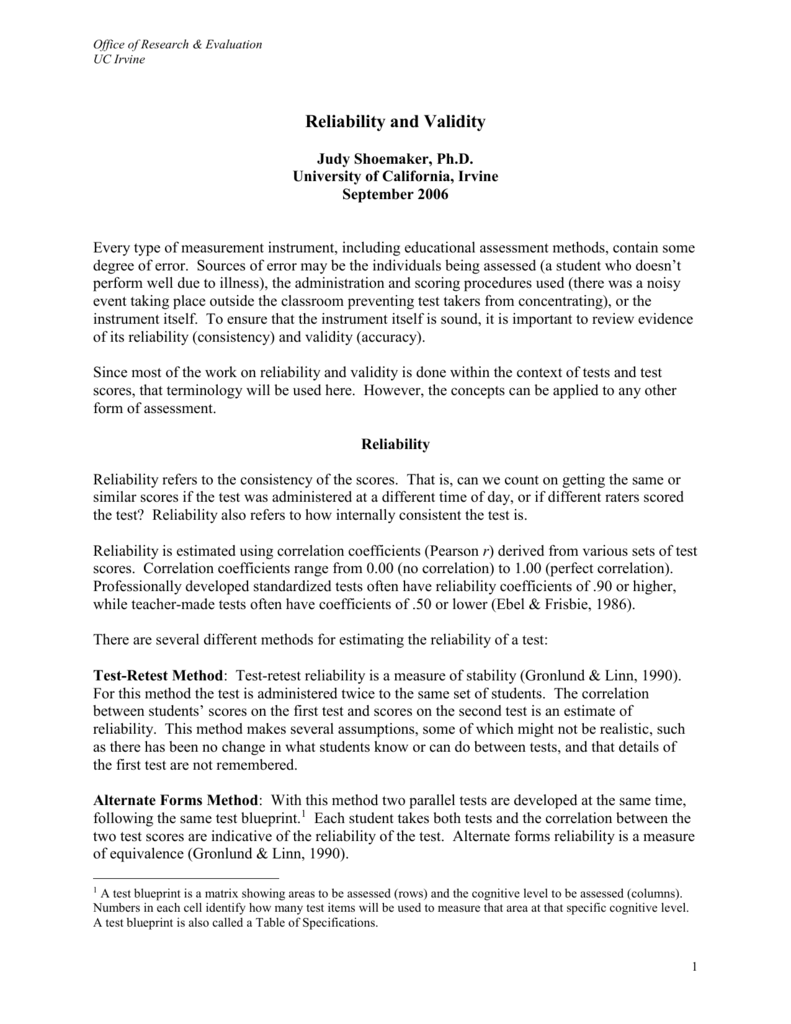
For example, some tests contain question banks, where multiple questions are created to assess the same knowledge or skill. Next, multiple versions of the same assessment should produce consistent results. If a student completes the same assessment on two different days under similar conditions, the results should be about the same. Reliability refers to the consistency of assessment results and includes the following considerations.įirst, an assessment should have consistent results over time when taken under the same conditions.

Essay questions are examples of constructed-response questions.īoth of these question types have their own considerations to ensure reliability and validity.

Examples of these types of questions include multiple-choice, true or false, and matching questions.Īssessments may also include constructed-response questions, where students are given a prompt, and they have to construct their own responses. However, assessments can also include unit, chapter, and lesson tests and quizzes projects writing pieces presentations independent practice questions exit tickets and more.Īssessments may include selected-response questions, where students are given answer options to choose from. Standardized tests often come to mind when the term assessment is used, as they are commonly required by states to assess students’ performance and growth at specific intervals. Assessment results are used for a variety of purposes, often to guide instructional practices to improve student performance or evaluate instructional programs.

Types of Assessmentsįirst, let’s define the term assessment and explore some forms that assessments can take.Īn assessment is a way of collecting data about student learning. We’ll also describe assessment reliability and validity and explain why both are important. In this video, we’ll define the term assessment and describe some common examples. In order for these assessments to provide useful data for drawing conclusions, they must be both reliable and valid.

In this approach, student performance data is gathered frequently through a variety of assessments and used to guide instructional programs and practices. If you’ve participated in professional development within an educational setting recently, you’ve likely heard the term data-driven instruction.ĭata-driven instruction is common in education today.


 0 kommentar(er)
0 kommentar(er)
